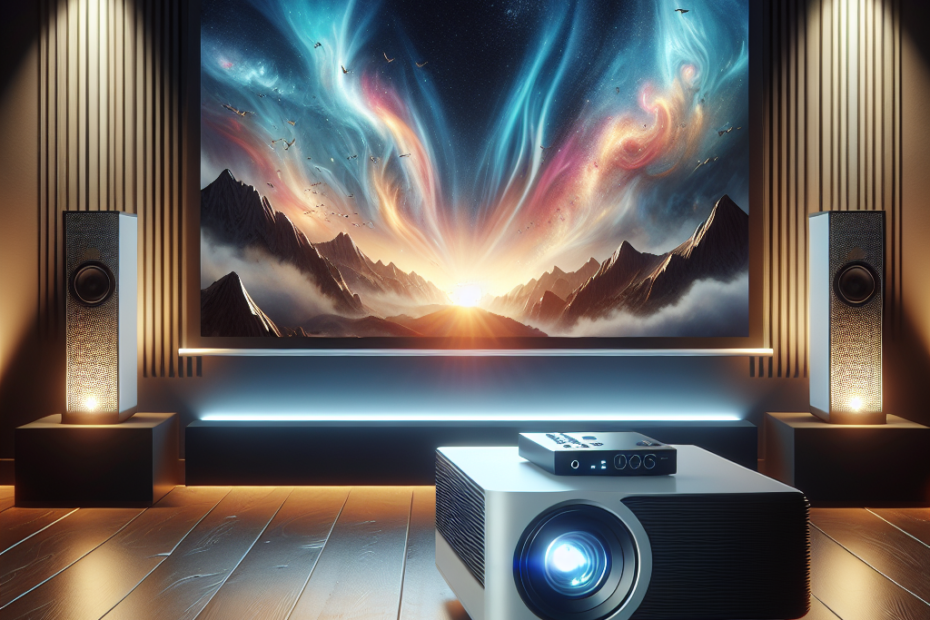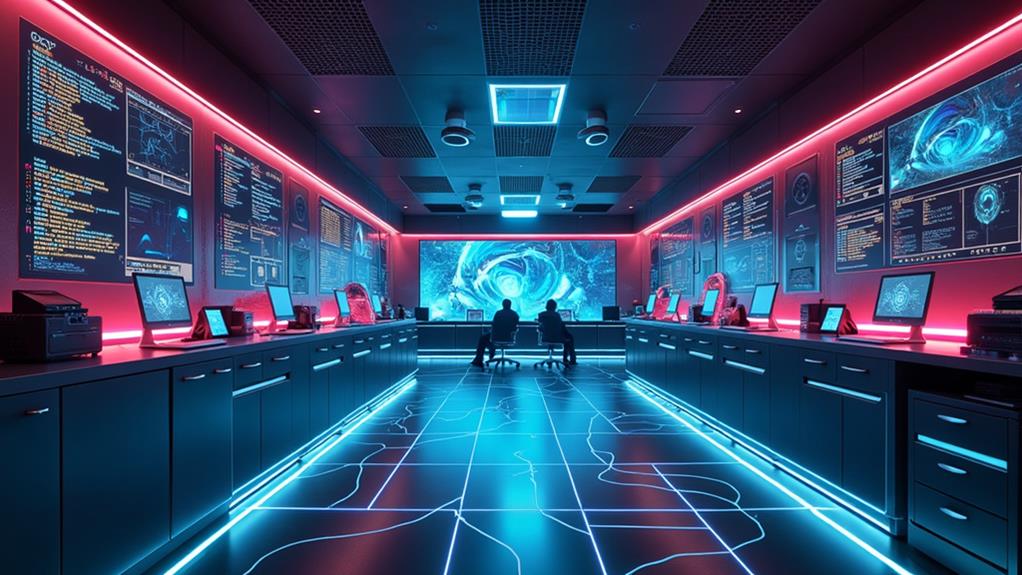



Are you looking to create the ultimate home theater experience with a mini PC setup? Well, you’re in luck! In this article, we will explore the essential accessories you need to transform your living room into a captivating cinematic paradise. From wireless keyboards to streaming devices, we’ve got your entertainment needs covered. So grab a bowl of popcorn and get ready to discover the must-have accessories for your mini PC home theater setup.
Projector
A projector is a crucial component of a mini PC home theater setup as it allows you to display your content on a big screen. When choosing a projector, there are several factors to consider.
Resolution
The resolution of a projector refers to the number of pixels it can display. Higher resolution projectors offer sharper and more detailed images. For a mini PC home theater setup, it is recommended to choose a projector with at least Full HD (1920×1080) resolution to ensure a high-quality viewing experience.
Brightness
The brightness of a projector is measured in lumens and determines how well the image is displayed in various lighting conditions. For a home theater setup, it is ideal to choose a projector with a high brightness level, typically around 2000-3000 lumens. This ensures that the image appears vibrant and clear, even in a dimly lit room.
Throw Ratio
The throw ratio of a projector determines the size of the image it can display based on the distance from the screen or wall. A short throw projector is suitable for smaller rooms where there might be limited space between the projector and the screen. On the other hand, a long throw projector is ideal for larger spaces where you have more flexibility in projector placement.
Screen Size
The screen size is an important consideration when setting up a home theater with a mini PC. The size of the screen should be chosen based on the seating arrangement and the distance between the projector and the screen. It is recommended to measure the available space and ensure that the screen size provides an immersive viewing experience for everyone in the room.
Screen
The screen plays a crucial role in enhancing the visual experience of your home theater setup. When selecting a screen for your mini PC setup, there are a few key factors to consider.
Type
There are various types of screens available, including fixed frame, motorized, and portable screens. Fixed frame screens provide a permanent setup, while motorized screens can be raised or lowered as needed. Portable screens are lightweight and easy to carry, making them a suitable choice for those who want a more flexible setup.
Size
The size of the screen should be selected based on the available space and the desired viewing experience. Consider the seating arrangement and the distance between the screen and the viewers to ensure that the screen size provides an immersive and comfortable viewing experience for everyone.
Aspect Ratio
The aspect ratio refers to the ratio of the screen’s width to its height. The most common aspect ratios for home theater setups are 16:9 and 2.35:1. The 16:9 aspect ratio is suitable for most modern content, including movies and TV shows, while the 2.35:1 aspect ratio is ideal for a cinematic experience.
Material
The material of the screen can greatly affect the image quality and viewing experience. There are different screen materials available, such as matte white and gray screens. Matte white screens are versatile and provide good color reproduction, while gray screens enhance contrast and black levels, making them suitable for rooms with ambient light.
Sound System
A sound system is essential for a mini PC home theater setup to create an immersive audio experience. Consider the following components when choosing a sound system.
Soundbar
A soundbar is a compact and convenient option for enhancing the audio quality of your mini PC home theater setup. It typically consists of multiple speakers placed in a single unit, delivering a wide soundstage and improved clarity. Look for a soundbar with built-in amplification and various connectivity options to ensure compatibility with your mini PC.
Speakers
If you prefer a more traditional approach, you can opt for a separate speaker system. This includes front speakers, surround speakers, and a subwoofer. The front speakers create the main soundstage, while surround speakers deliver a more immersive audio experience. The subwoofer enhances the low-frequency sounds, providing deep and powerful bass.
Receiver
A receiver serves as the central hub for your sound system, allowing you to connect various audio sources and control the audio output. Look for a receiver that supports the desired audio formats (such as Dolby Atmos) and offers sufficient connectivity options, such as HDMI inputs and outputs, to connect your mini PC and other devices seamlessly.
Mini PC
A mini PC is the heart of your home theater setup, providing the computing power to run your media content. Consider the following factors when choosing a mini PC.
Processor
The processor of a mini PC determines its performance capabilities. Look for a mini PC with a fast and powerful processor, such as an Intel Core i5 or i7. This ensures smooth playback of high-resolution videos and multitasking capabilities for a seamless home theater experience.
RAM
The amount of RAM in a mini PC affects its multitasking capabilities and overall performance. Aim for at least 8GB of RAM, but consider upgrading to 16GB if you plan to use resource-intensive applications or multitask extensively.
Storage
The storage capacity of a mini PC determines how much media content and applications you can store. It is recommended to choose a mini PC with a spacious hard drive or solid-state drive (SSD), preferably with a capacity of 256GB or more. This allows you to store a large collection of movies, TV shows, and other media files without running out of space.
Operating System
The choice of operating system depends on your personal preferences and software compatibility. Windows is a popular choice for a mini PC home theater setup as it offers a wide range of media applications and compatibility with various devices. Alternatively, you can consider Linux or other operating systems based on your specific requirements.
Wireless Keyboard and Mouse
A wireless keyboard and mouse offer convenience and flexibility when operating your mini PC home theater setup. Look for the following features when choosing a wireless keyboard and mouse.
Connectivity
Ensure that the wireless keyboard and mouse use reliable connectivity technology, such as Bluetooth or a USB receiver, to connect to your mini PC. This ensures a stable and seamless connection without interference.
Ergonomic Design
Choose a wireless keyboard and mouse with an ergonomic design to ensure comfortable typing and navigation. Look for features like a contoured shape, wrist support, and adjustable height to reduce strain during extended use.
Backlit Keys
Consider opting for a wireless keyboard with backlit keys, especially if you plan to use your home theater setup in a dimly lit room. Backlit keys improve visibility and make it easier to operate the keyboard in low-light conditions.
Media Streaming Device
A media streaming device allows you to access and stream online content on your mini PC home theater setup. Consider the following options when choosing a media streaming device.
Chromecast
Chromecast is a popular media streaming device that plugs into your TV or projector’s HDMI port, allowing you to stream content from your mini PC or mobile device. It supports various streaming services and offers a user-friendly interface.
Fire TV Stick
The Fire TV Stick is an Amazon-based media streaming device that offers access to a wide range of streaming services and apps. It plugs into your TV or projector’s HDMI port and provides a seamless streaming experience for your mini PC home theater setup.
Roku
Roku devices are known for their wide range of streaming options and user-friendly interface. With a Roku streaming media player, you can easily access your favorite streaming services and channels on your mini PC home theater setup.
External Hard Drive
An external hard drive is a great addition to your mini PC home theater setup, providing additional storage capacity and backup options. Consider the following factors when choosing an external hard drive.
Storage Capacity
The storage capacity of an external hard drive determines how much media content you can store. Depending on your requirements, choose a hard drive with sufficient capacity, such as 1TB or higher, to accommodate your growing collection of movies, TV shows, and other media files.
Data Transfer Speed
Consider the data transfer speed of the external hard drive, as it affects the time it takes to transfer large files. Look for a hard drive with a high-speed interface, such as USB 3.0 or Thunderbolt, to ensure fast and efficient file transfers.
Portability
If you plan to take your external hard drive with you or use it for backup purposes, consider its portability. Look for a compact and lightweight external hard drive that is easy to carry and doesn’t take up much space.
Power Surge Protector
A power surge protector is an essential accessory to protect your mini PC and other electronic devices from voltage spikes and electrical surges. Consider the following factors when choosing a power surge protector.
Number of Outlets
Ensure that the power surge protector has an adequate number of outlets to accommodate all your devices. Consider the number of devices in your home theater setup, including the mini PC, projector, sound system, and media streaming device, and choose a surge protector with enough outlets to accommodate them all.
Joule Rating
The joule rating of a surge protector indicates its ability to absorb energy from power surges. It is recommended to choose a surge protector with a high joule rating, typically 1000 joules or more, to provide sufficient protection for your valuable electronic devices.
USB Ports
Some power surge protectors come with built-in USB ports, allowing you to charge your mobile devices or connect additional devices directly to the surge protector. This feature provides added convenience and eliminates the need for extra power adapters.
Cables and Connectors
Cables and connectors are essential for connecting various devices in your mini PC home theater setup. Consider the following cable options.
HDMI
HDMI cables are used to connect the mini PC to the projector or TV. Ensure that you choose high-quality HDMI cables that support the desired resolution and audio formats to ensure a reliable and high-quality connection.
Ethernet
An Ethernet cable is used to establish a wired internet connection for your mini PC. If you prefer a stable and fast internet connection, consider using an Ethernet cable instead of relying solely on wireless connectivity.
Audio/Video Cables
Depending on the audio and video outputs and inputs of your devices, you may need additional audio/video cables, such as RCA cables, optical cables, or DisplayPort cables. Ensure that you have the necessary cables to connect your mini PC, sound system, and projector or TV.
Universal Remote Control
A universal remote control allows you to control multiple devices in your mini PC home theater setup with a single remote. Consider the following features when choosing a remote control.
Compatibility
Ensure that the universal remote control is compatible with all the devices in your home theater setup. Look for a remote control that supports a wide range of brands and models to ensure seamless integration and control.
Programmable Options
Some universal remote controls offer programmable options, allowing you to customize the remote to your specific preferences. This includes assigning specific functions to buttons or creating macros to perform multiple actions with a single button press.
Smart Features
Consider opting for a universal remote control with smart features, such as voice control or Wi-Fi connectivity. Smart remotes offer added convenience and allow you to control your mini PC home theater setup with ease.
In conclusion, setting up a mini PC home theater involves several key accessories. From the projector and screen to the sound system and cables, each component plays a crucial role in creating an immersive and enjoyable viewing experience. By understanding the various factors to consider for each accessory, you can build a mini PC home theater setup that meets your specific needs and preferences.
Disclosure: As an Amazon Associate, I earn from qualifying purchases.





